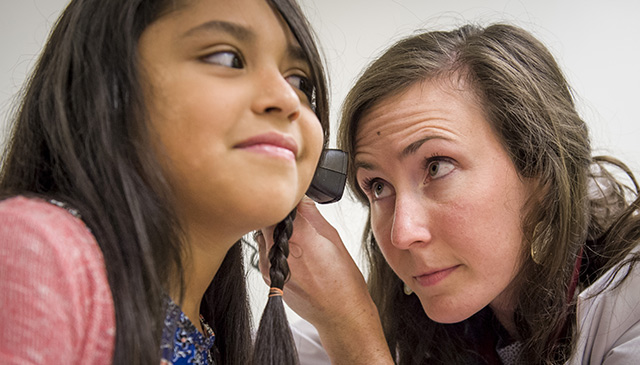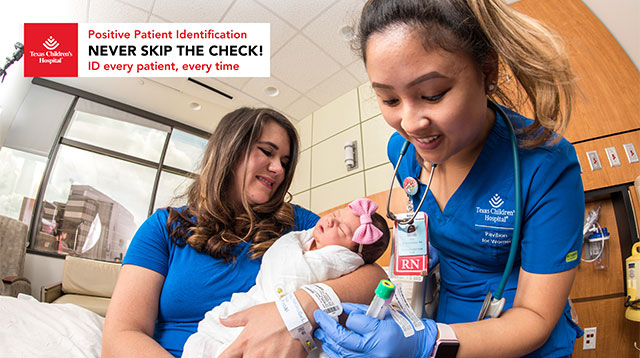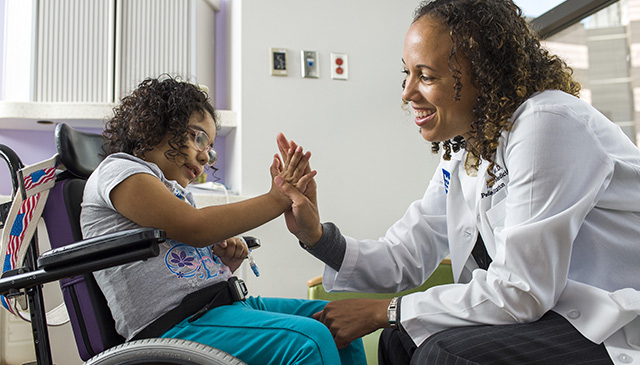
At Texas Children’s, we care for some of the country’s most critically ill patients, and delivering safe, quality care for our patients is the most important responsibility of each staff member and employee.
In Fiscal Year 2019, Texas Children’s reached several remarkable patient safety milestones, which demonstrate our continued commitment to cultivating a harm-free environment for our patients.
“The key to creating an environment of safe patient care is ensuring that our staff is equipped with the knowledge and tools they need to take preventive action,” said Texas Children’s Chief Safety Officer Dr. Joan Shook. “When analyzing our patient safety statistics over the last several years, we have seen a significant decrease in both serious patient safety events and preventable deaths across the system.”
Texas Children’s reached several patient safety milestones in FY19 including:
- Decreased serious safety events (SSE) – A serious safety event is a deviation from standard practice or process that reaches the patient and causes moderate to severe harm or death. In FY13, there were 20 SSE’s compared to 5 SSE’s in FY19, resulting in a 75 percent decrease.
- Reached Zero SSE deaths in FY19 – Since January 20, 2018, Texas Children’s reached 655 days with zero preventable pediatric deaths and zero maternal deaths since 2013.
- Reduced Hospital Acquired Conditions (HAC) – Pressure injuries have significantly improved over time and we have seen a considerable drop in adverse drug events, catheter associated urinary tract infections and surgical site infections.
- Immunization compliance – Since implementing new immunization requirement in 2019, the organization has reached a 99.3 percent compliance rate, which is important to patient safety.
As part of Texas Children’s continuing efforts to improve patient safety across the system, employees and medical staff participated in the Agency for Healthcare Research and Quality’s 2019 Hospital Survey on Patient Safety Culture that is administered by Texas Children’s every 18 to 24 months. The survey evaluates 13 dimensions of patient safety and measures the organization’s overall patient safety performance.
When comparing survey results from 2016, Texas Children’s – for the first time ever – showed statistically significant improvement in five major areas including feedback and communication about error, teamwork across individual units, management support for patient safety, staffing, and hand-offs and transitions.
Through the hospital’s systemwide patient safety and quality improvement efforts, employees and staff continue to apply proven safety behaviors in their every day work and are more comfortable speaking up when there is a potential safety concern. Shook says this along with other contributing factors – like reviewing monthly unit-based safety scoop reports and reaccessing current practices to identify areas of improvement where change is needed – have helped us create and sustain a culture of patient safety.
“Our recent patient safety milestones reflect the tremendous work and collaboration from multiple teams across the organization that have led us on a positive trajectory,” Shook said. “Our goal is to build upon these successes and continue to take proactive steps to eliminate preventable harm to our patients.”





 As a health care system, Texas Children’s believes that a critical component to offering outstanding clinical care is measuring the results of the care we deliver and doing our best to provide our patients and families with the safest environment possible.
As a health care system, Texas Children’s believes that a critical component to offering outstanding clinical care is measuring the results of the care we deliver and doing our best to provide our patients and families with the safest environment possible.
